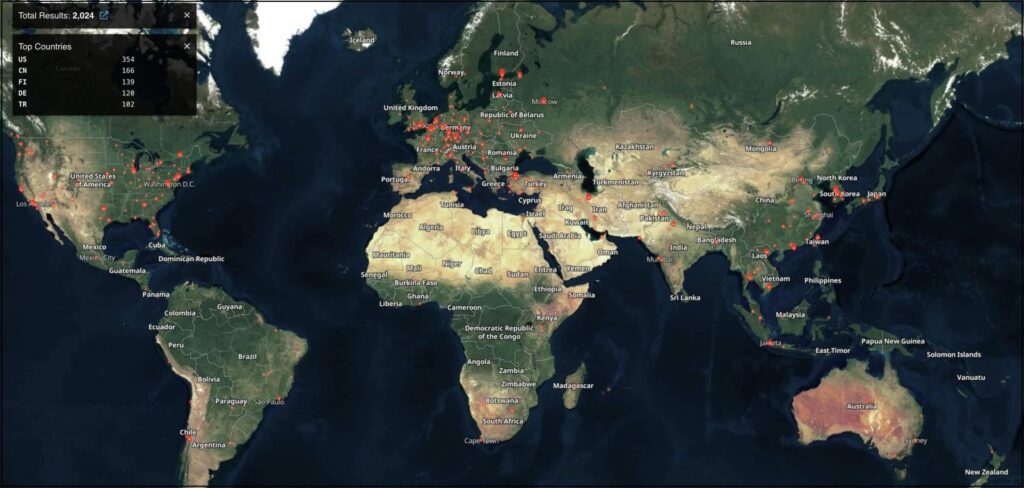VMware confirms critical vCenter flaw now exploited in attacks
VMware has affirmed that a basic vCenter Server remote code execution weakness fixed in October is currently under dynamic double-dealing.
vCenter Server is an administration stage for VMware vSphere conditions that assist overseers with overseeing ESX and ESXi servers and virtual machines (VMs).
“VMware has affirmed that double-dealing of CVE-2023-34048 has happened in the wild,” the organization said in an update added to the first warning this week.
Table of Contents
Trend Micro researcher Grigory Dorodnov discovered the flaw caused by an out-of-bounds write vulnerability in the DCE/RPC protocol implementation of vCenter.
Aggressors can take advantage of it in low-intricacy assaults with high secrecy, uprightness, and accessibility influence that don’t need confirmation or client cooperation. Because of its basic nature, VMware has likewise given security patches for numerous end-of-life items without dynamic help.
Network access specialists like to take over VMware servers and afterward sell on cybercrime gatherings to ransomware packs for simple admittance to corporate organizations. Numerous ransomware gatherings (like Illustrious, Dark Basta, LockBit, and, all the more as of late, RTM Storage, Qilin, ESXiArgs, Monti, and Akira) are currently known for straightforwardly focusing on the casualties’ VMware ESXi servers to take and encode their records and request immense payments.
As indicated by Shodan information, over 2,000 VMware Center servers are uncovered on the web, possibly helpless against assaults and presenting corporate organizations to penetrate gambles by giving their vSphere the board job.VMware confirms critical vCenter flaw now exploited in attacks.

Since there is no workaround, VMware has asked administrators who can’t fix their servers to stringently control network border admittance to vSphere the board parts.
“VMware firmly prescribes severe organization border access control to all administration parts and connection points in vSphere and related parts, like capacity and organization parts, as a component of an in general successful security pose,” the organization cautioned.
2012/tcp, 2014/tcp, and 2020/tcp are the specific network ports that could be exploited in attacks against this vulnerability.
In June, VMware additionally fixed numerous high-seriousness vCenter Server security imperfections presenting code execution and verification sidestep dangers to weak servers.
That very week, the organization fixed an ESXi zero-day involved Chinese state programmers in information burglary assaults and cautioned clients of one more effectively taking advantage of basic Aria Activities for Organizations defect.
IT administrators and security teams have had to deal with warnings about multiple active security vulnerabilities since the beginning of the year. These vulnerabilities include zero days that affect Citrix Netscaler servers, Ivanti Connect Secure, and Ivanti EPMM. VMware confirms critical vCenter flaw now exploited in attacks.
Learn more about Cyber Security Here...
Chinese Hackers Silently Weaponized VMware Zero-Day Flaw for 2 Years
FAQs:
- Can VMware run macOS on non-Apple hardware?
- No, VMware’s end-user license agreement (EULA) prohibits running macOS on non-Apple hardware. While VMware supports virtualizing various operating systems, macOS is an exception due to Apple’s licensing restrictions.
- Does VMware support 3D graphics for virtual machines?
- Yes, VMware supports 3D graphics acceleration for virtual machines. This feature is particularly useful for applications requiring advanced graphics capabilities, such as CAD software or 3D games.
- What is Transparent Page Sharing (TPS) in VMware?
- Transparent Page Sharing is a memory-saving feature in VMware that identifies identical memory pages across virtual machines and consolidates them, reducing memory usage. However, due to security concerns, TPS is often disabled by default in recent VMware versions.
- Is VMware involved in open-source projects?
- Yes, VMware actively contributes to various open-source projects. For example, it is a key contributor to the Open Virtualization Format (OVF) standard and has open-sourced some of its projects, including Clarity UI for web development.
